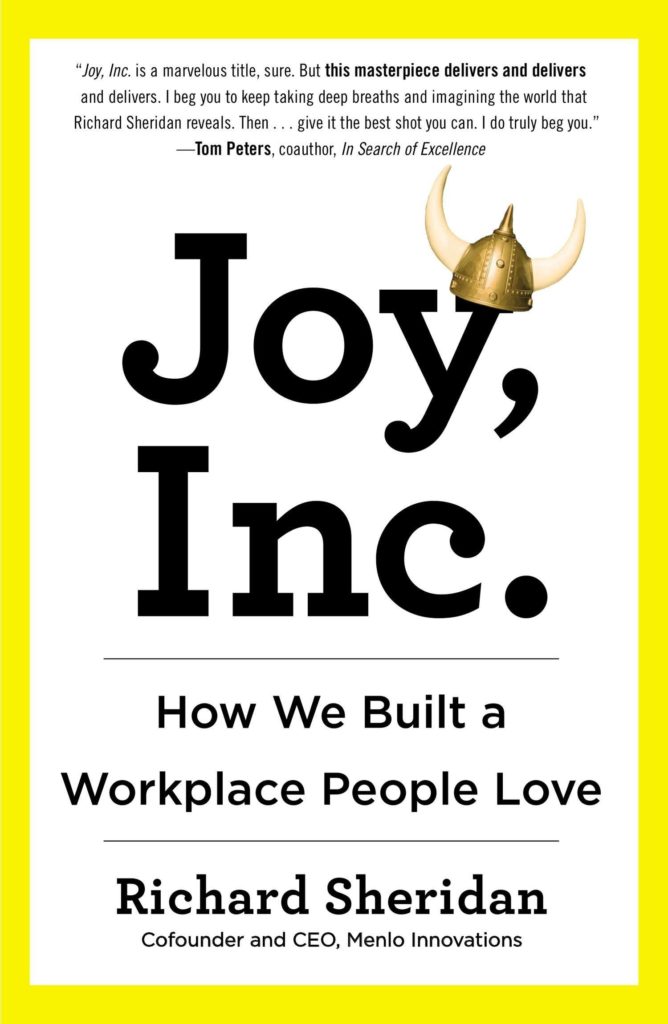
When my daughter first started preschool, I posted this iconic movie scene on Facebook with a quip:
“First days at school should always feel like this.”
I want her school experiences to be as magical as arriving at Hogwarts for the first time.
I’m hoping our students feel like this when they come to Virginia Western. When they arrive on campus, and walk into our classrooms, or log onto their online portal.
Over the summer, I read a Harvard Business Review article that argued that all organizations should prioritize joy … to put joy at the center of their missions.
This HBR article clicked with me like no other in quite some time, and it inspired me to read an armload of books on the topic, all of which revolve around the importance of joy, especially in our jobs.
Joy shouldn’t be seen as a frivolous side project … but at the heart of what we do. It can improve engagement, retention, and overall satisfaction with our work.
Our enrollment struggles and gloom and doom in news headlines do not inspire joy. Quite the opposite. We will never thrive if we are working from a place of fear.
As we start the 2019 academic year, I want to focus on bringing more joy to the students and the communities we serve. To always keep asking ourselves: What does joy look like for our students? How can we design for delight?
This isn’t to say joy isn’t already happening on our campus. The fantastic work happening in Student Services … and TRiO … and the upcoming Harry Potter-themed open house on Oct. 31 in Brown Library all immediately come to mind.
I just want more of it … to be more intentional in our joy-making.
But creating more joy starts with us, and it will radiate out to our students and beyond.
So I started small, in my own division. I created a “Joy Survey” for the Institutional Advancement team.
I asked three simple questions:
- What are your favorite candies?
- What are your favorite work snacks and drinks?
- What are your favorite flowers?
I compiled the answers and created a table of joy in Google Docs, and shared it with our whole division. (If you’re curious, we have a lot of coffee and Twizzler lovers on our team.)
Whenever we want to brighten a holiday or milestone for one of our team members, we know what will bring them joy.
I urge you to do the same on your own teams.
So start with your colleagues, and look for opportunities to bring joy to your students.
I’m betting many of our efforts won’t cost much money … just time and focus. But if your ideas would require extra resources (grants, perhaps?), then come talk to me in the grants office.
We have annual Innovation Grants through the Educational Foundation, which are due every March. The maximum award is $10,000. All members of Virginia Western faculty and classified staff, including adjunct faculty and part-time employees, are eligible to submit proposals. ( Here’s a good example )
There are annual Paul Lee Professional Development grants through the VCCS. The next round of applications are due Sept. 15. ( More details )
One tip I’ve learned from all of the joy books is the power of working in pairs. (I have written about super duos before.) If you have an idea and are a little hesitant to apply for a grant, I urge you to find a buddy, especially if that buddy is in a different division. It’s can be way more joyful to make magic as a team.
I’ll be writing more about joy and grant opportunities on the grants blog, so look for occasional updates in the Weekly Bulletin.

And if you’re just as intrigued with the idea of joy as I am, I urge you to join my unofficial joy book club:
- Joy, Inc.: How We Built a Workplace People Love by Richard Sheridan
- Joyful: The Surprising Power of Ordinary Things to Create Extraordinary Happiness by Ingrid Fetell Lee
- Teach Like Finland: 33 Simple Strategies for Joyful Classrooms by Timothy Walker (available in the Brown Library)
“If we (as a team, a department, a company, an organization) can regularly delight those we serve, we will experience a joy that puts a spring in our step, a lift in our hearts, and a focus in our minds that will, in turn, produce better results, higher quality, more engagement, less turnover, better market reputation, and generally more satisfaction with our work. We will carry these feelings home with us, and we will end up being better spouses, better parents, and better neighbors with fewer health issues due to less unhealthy stress in our work lives. We may still be stressed at work, but it will be a healthier kind of stress because we can take pride in a hard day’s work.”
— Richard Sheridan, author of “Chief Joy Officer” and “Joy, Inc.”
— Stephanie Ogilvie Seagle, August 2019






 Shelley Lyons is glad to be back on campus as she is a Virginia Western alum, and has served as the Administrative Officer for Grants Administration at Virginia Western since early 2022. Prior to VWCC, her career focus was within the Human Services and Arts fields. She wrote her first grant in 1996 on a whim and has continued to plan and learn since that time. She most enjoys seeing a well-planned project come to fruition, where funder, project manager and beneficiaries can all feel success and see impact.
Shelley Lyons is glad to be back on campus as she is a Virginia Western alum, and has served as the Administrative Officer for Grants Administration at Virginia Western since early 2022. Prior to VWCC, her career focus was within the Human Services and Arts fields. She wrote her first grant in 1996 on a whim and has continued to plan and learn since that time. She most enjoys seeing a well-planned project come to fruition, where funder, project manager and beneficiaries can all feel success and see impact.